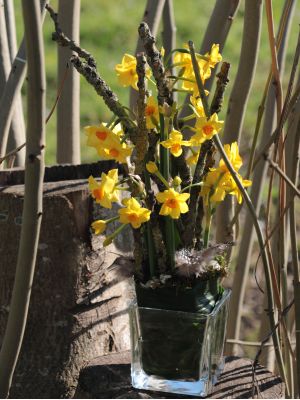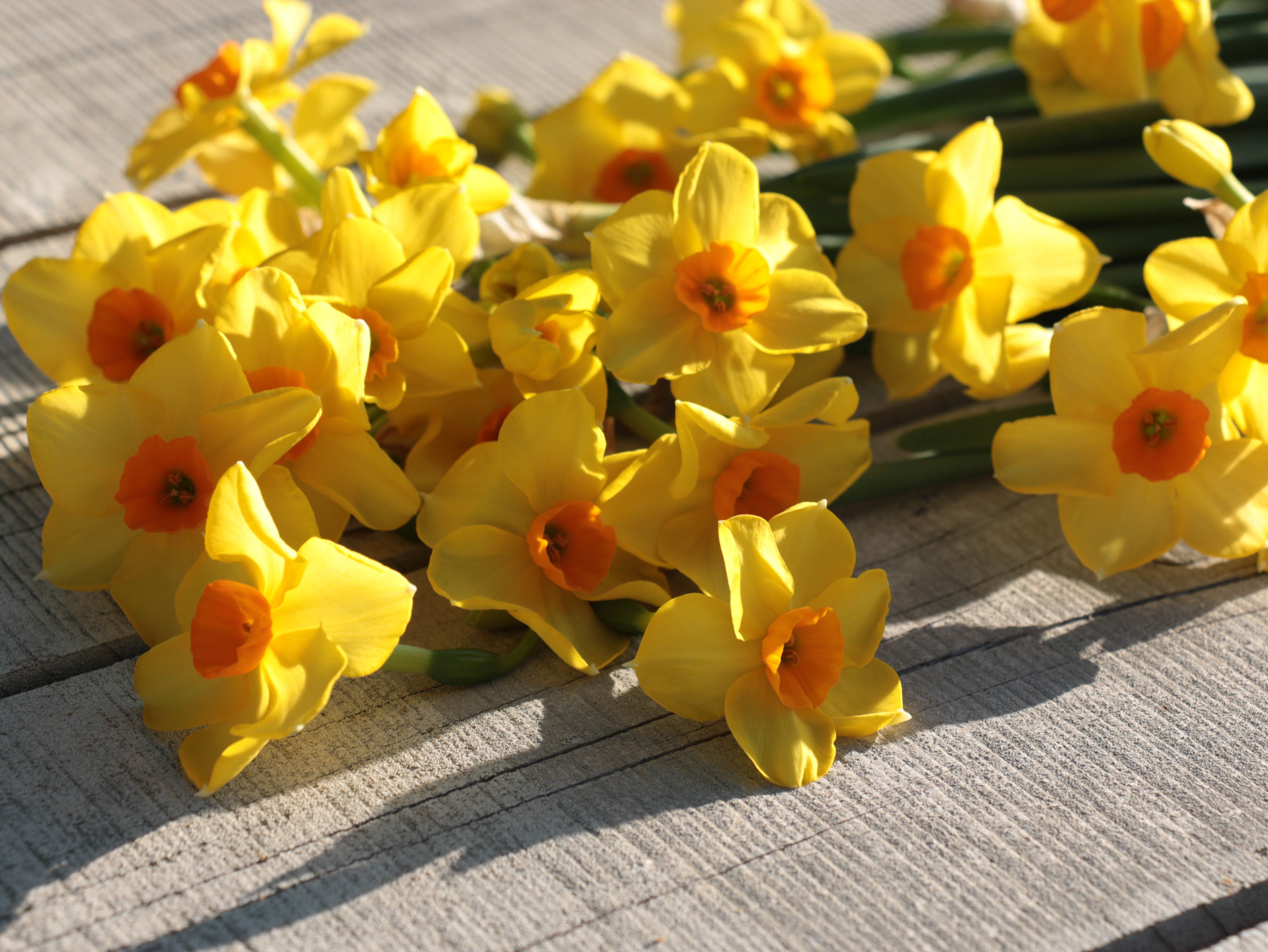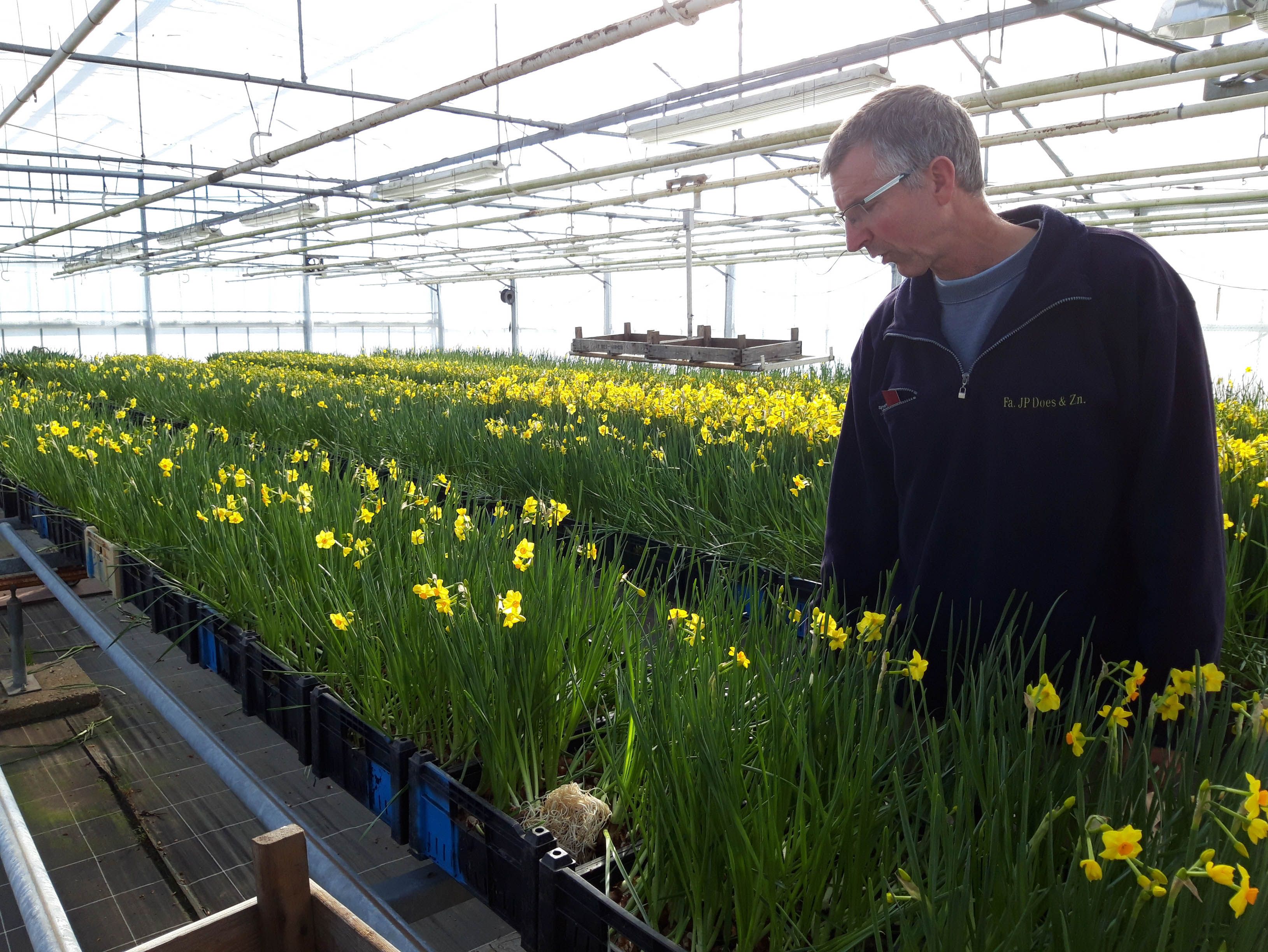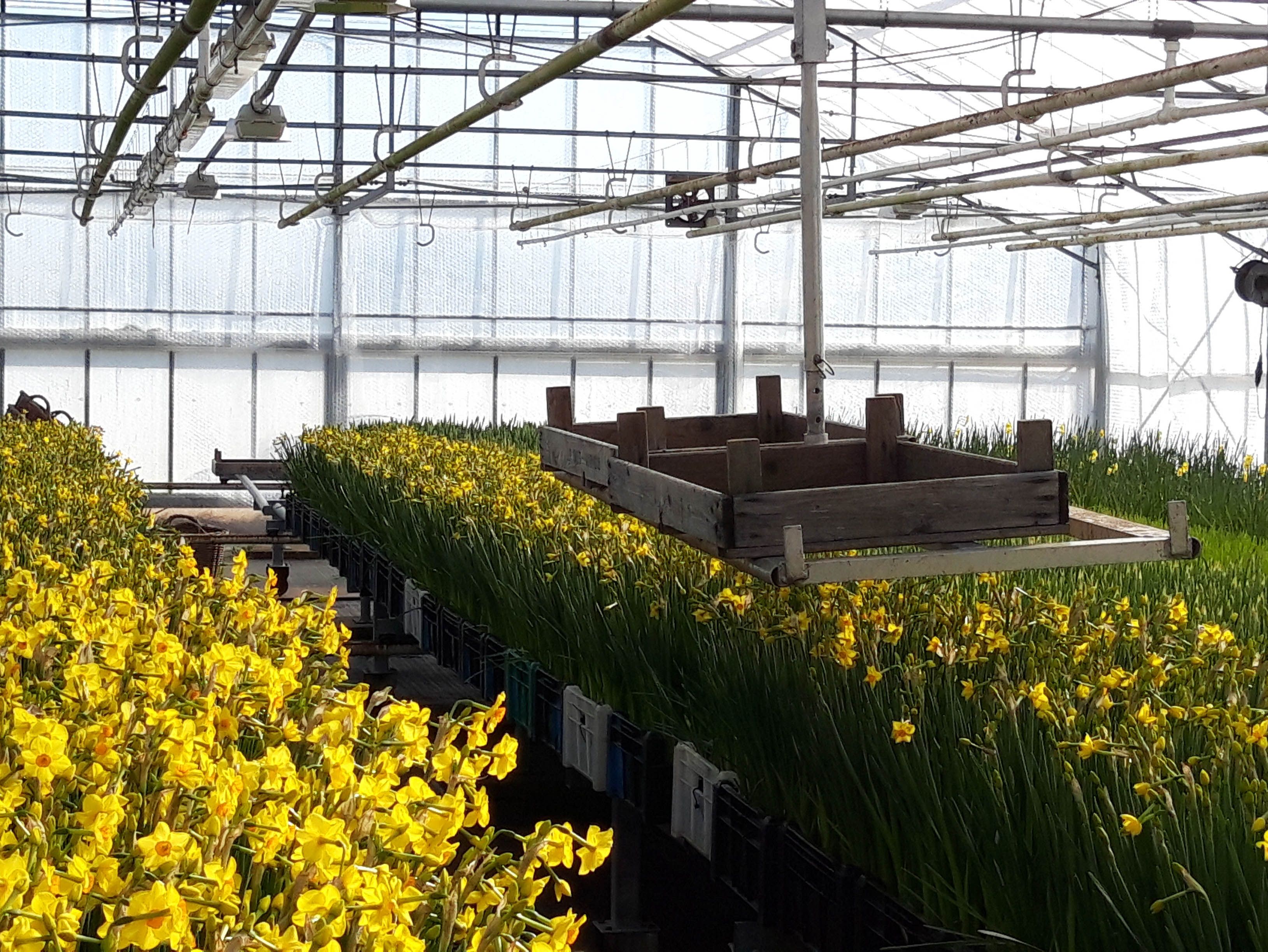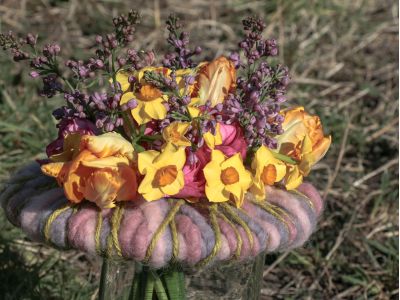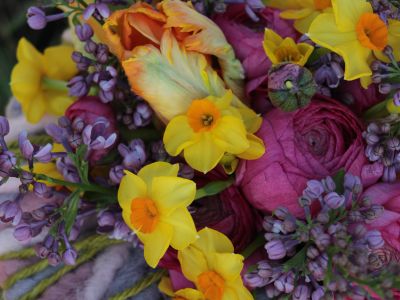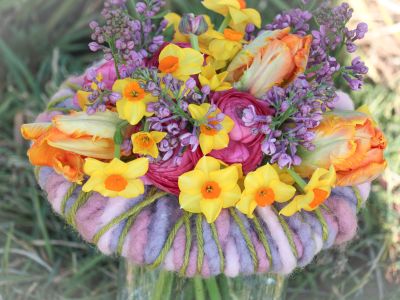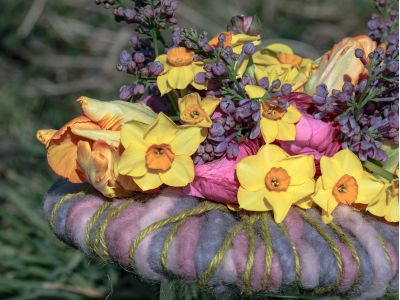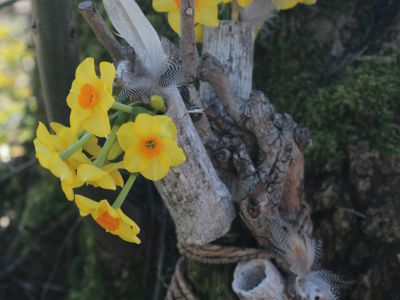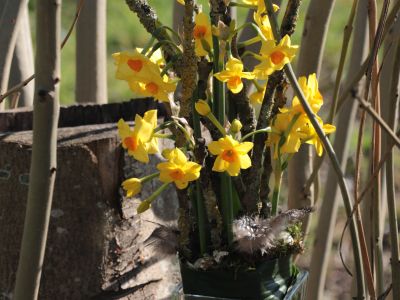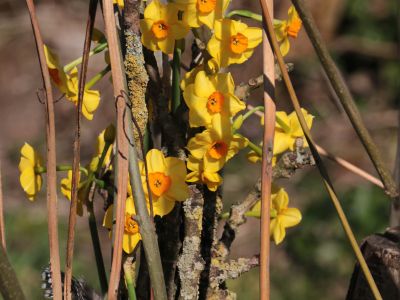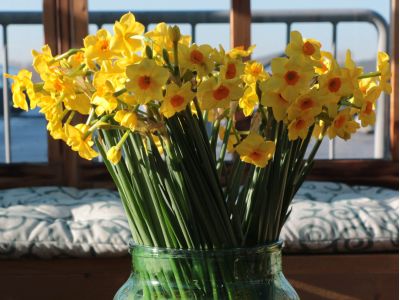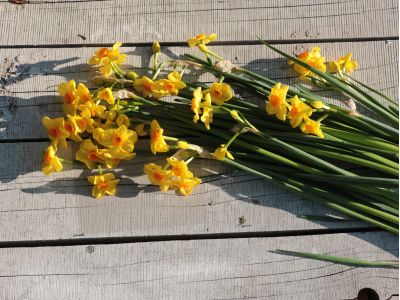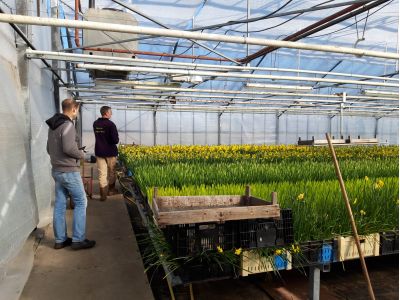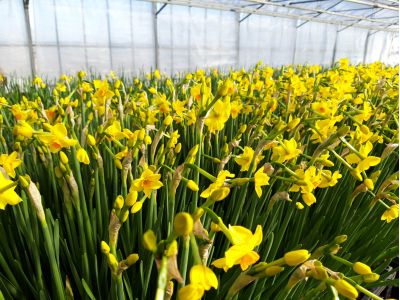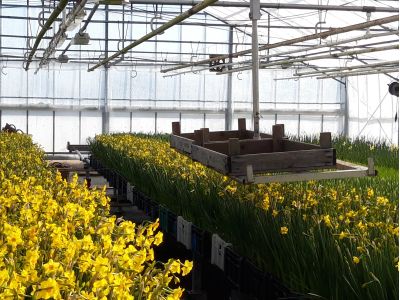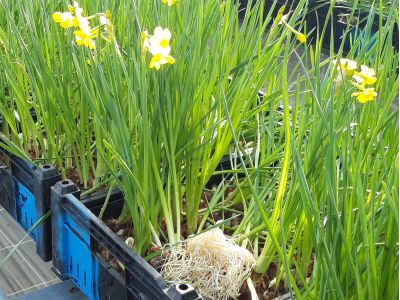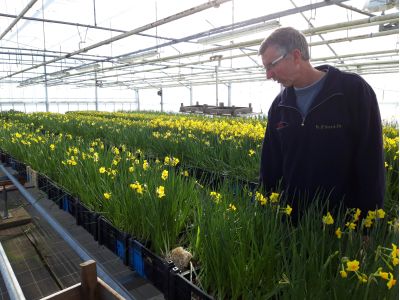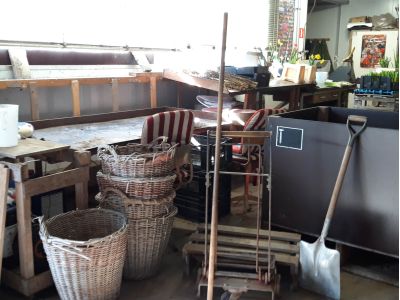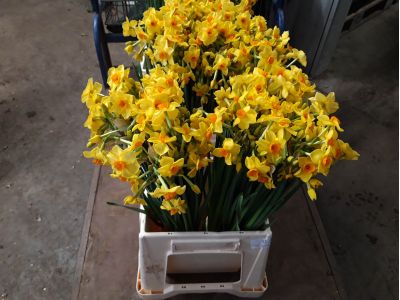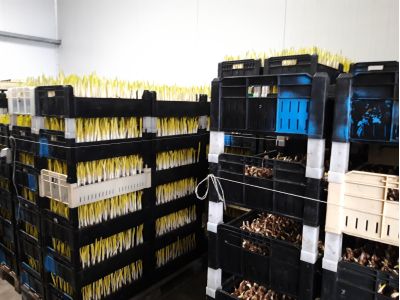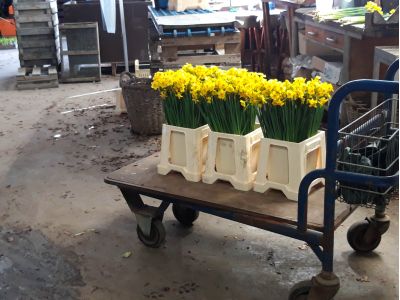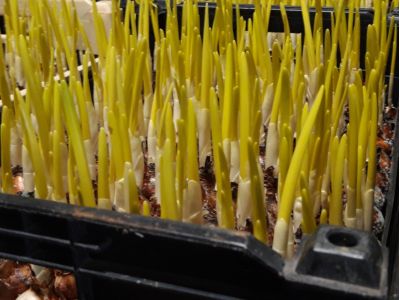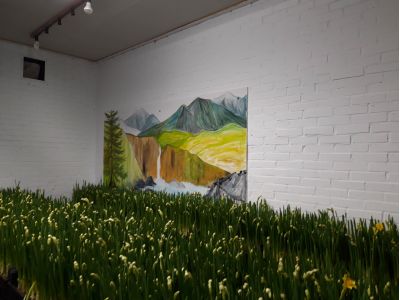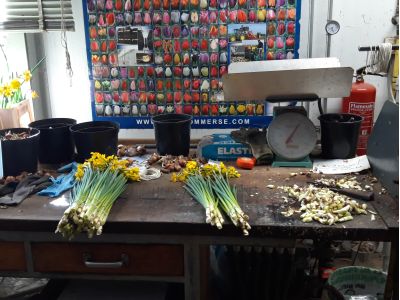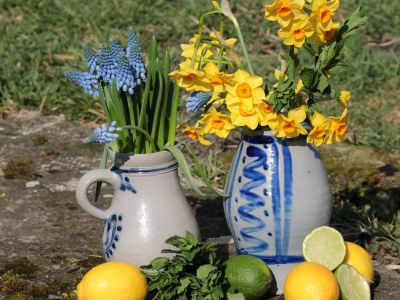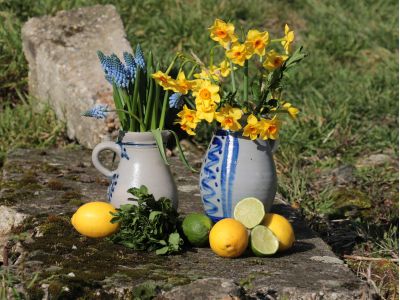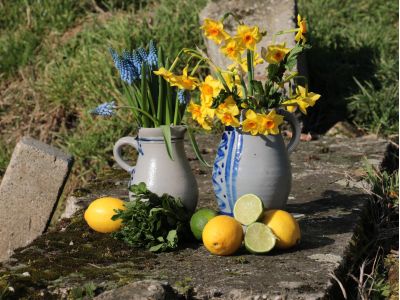Narcissus Martinette
In the spotlights
For many Westerners the symbolism of the daffodil is linked to vanity and selfishness. There’s a reason we call someone who overflows with self-love a narcissist. For us, the daffodil means the beginning of spring in the garden. "If you see and smell the first daffodils, you know that spring is about to start", says Hans, from J.P. Does & Zn. To celebrate this beginning of spring, we put the Narcissus (Tazetta Grp) 'Martinette' in the spotlight of the FloraPodium, one of the most powerfully fragrant daffodils.
In the season
Hans grows five different types of daffodils: 'Martinette', 'Bridal Crown', 'Geranium', 'Dick Wilden' and 'Standard Value'. In addition, he grows several seasonal products such as tulips, clarkias, montbretias and chrysanthemums. Because Hans only grows on 300 m2 of daffodils, he tries to make a difference in growing small and unique varieties. This allows him to compete against the bigger nurseries. Breeding is not done by Hans himself; he purchases his bulbs from other growers.
Different categories
Daffodils are classified into different categories. The trumpet daffodil, the large-crowned daffodil and the short-nosed daffodil, are the most famous species. The Narcissus (Tazetta Grp) 'Martinette' belongs to the Tazetta group and can grow three to six flowers per stem. The petals often point backwards. The flower produces a very strong fragrance, which is also a characteristic for this group.
In the spotlights
Daffodils cultivated as a pot plant are generally species which grow short and compact. The cut varieties, on the other hand, need to be long so that they can be used in bouquets. However, a specific variety is not necessarily only suited for either pot plants or as a cut flower. You can use them for both purposes. 'Martinette' creates an early Easter atmosphere. It’s a strong daffodil in a cheerful yellow color. The multiple flowers provide a playful effect and therefore are great to be used as table decoration in small vases. In addition, they also spread a wonderful fragrance in the house. Real spring!
Not together in the vase
The current trend is to combine several flowers together in a vase. We asked Hans what his opinion on this trend is, since all daffodil species contain the extremely toxic alkaloid lycorin. This is mainly present in the bulb, but also in the leafs. According to him, it’s better to forget this trend with daffodils, because the mucus from the daffodils is too toxic and affects other flowers. Where some flowers are resistant to the mucus, many still would still be affected by it. For that reason Hans says we can’t take the risk.
What he enjoys most, is a vase full of different daffodil varieties on the table. "That is the best thing to combine together, with the best result!"
However, daffodils can be combined with other flowers if they are no longer on water. Daffodils are of course very nice to process at spring weddings. If the daffodils are used in a bridal bouquet, they don’t harm the other flowers.
The cultivation
Hans runs the company together with his wife and an employee. He grows about 300,000 stems of daffodils every season, divided in the weeks from mid-January to Easter. The species can vary per year but the numbers are about the same.
Independence after all
Jan Does, Hans’ father, has worked in paid employment in his younger years. But Hans had been itching to start his own nursery. This became a real possibility when he had the opportunity to rent some land and later to buy it. That is how he slowly managed to build his business. It was not his intention to take over the company of his father (who started it in 1972). But in the end he did. He first worked together with his brother and then continued with his wife.
Greenhouse growing
Hans brings his carefully selected quality products (lots of flowers on a stem) on the market with steadfast regularity and continuity. The daffodils are grown in the greenhouse. All other products, he grows outside. The daffodils from the Tazetta group are sensitive to frost and need protection in the ground in winter.
He puts the bulbs on water in plastic containers with sticks to provide an ideal working height. This is also the best way to prevent nematode spreading in the soil. Nematodes are microscopic worms that can attack the crop. They occur all over the world and always live underground. They thrive best in sandy soil. Millions of nematodes can live per square meter. If you grow daffodils in the ground, the chances are that the nematodes will destroy the crop, they will affect the bulbs.
The daffodil is an annual crop. Hans buys his bulbs from a bulb grower every year. The ideal temperature for growing is around 12 to 14 degrees Celsius, which he achieves best in the greenhouse. Although the daffodils can tolerate extreme temperatures down to zero degrees in the greenhouse.Hans mainly focuses on the cultivation of small special varieties. According to him, the yellow trumpets are the mass. There are several similar species in it, which are supplied in larger numbers. The market is limited for small, delicate and special varieties. That’s Hans’ challenge and he is always looking for the bulb growers that help him meet this challenge.
FloraPodium, 07 March 2019






